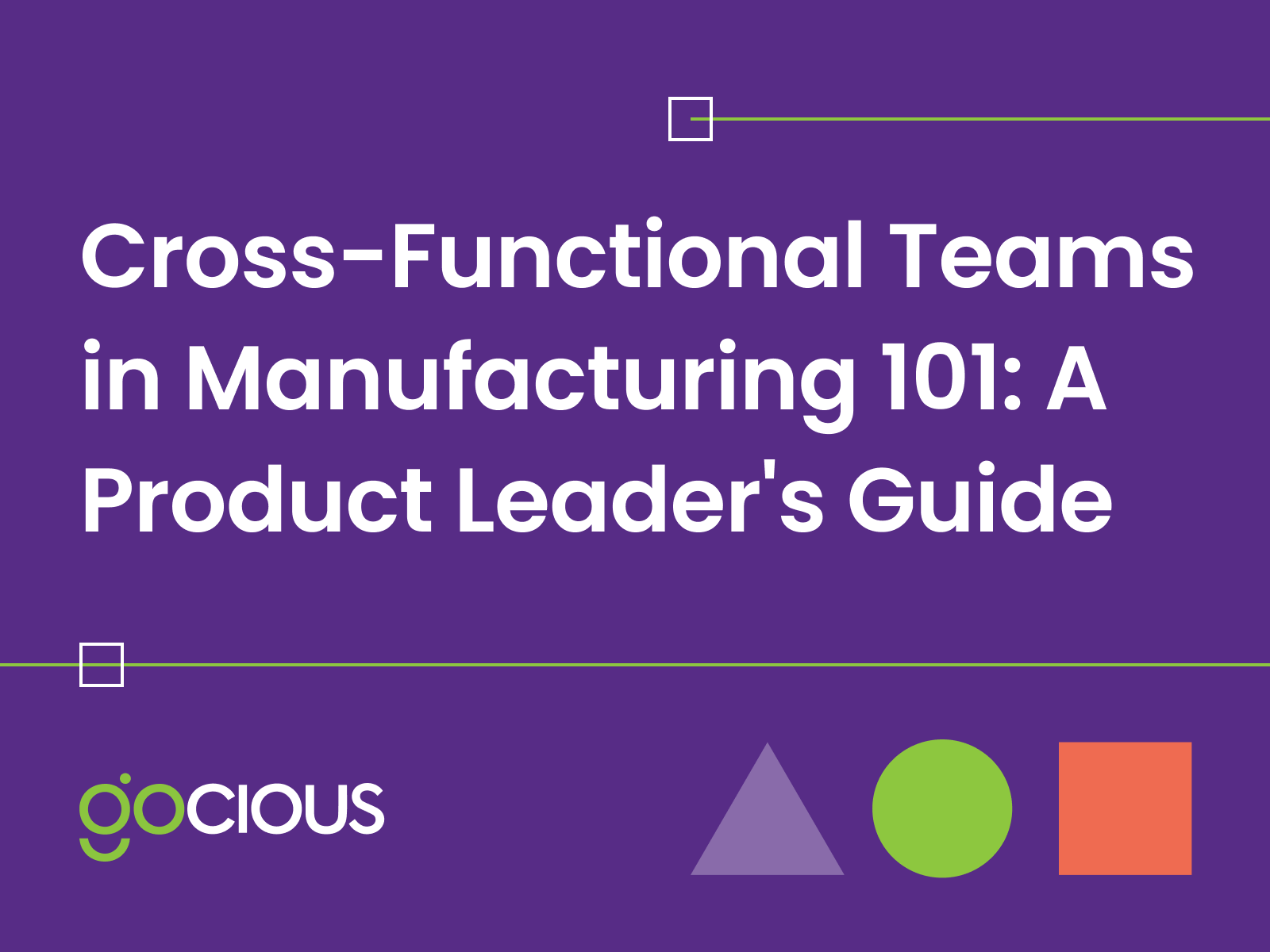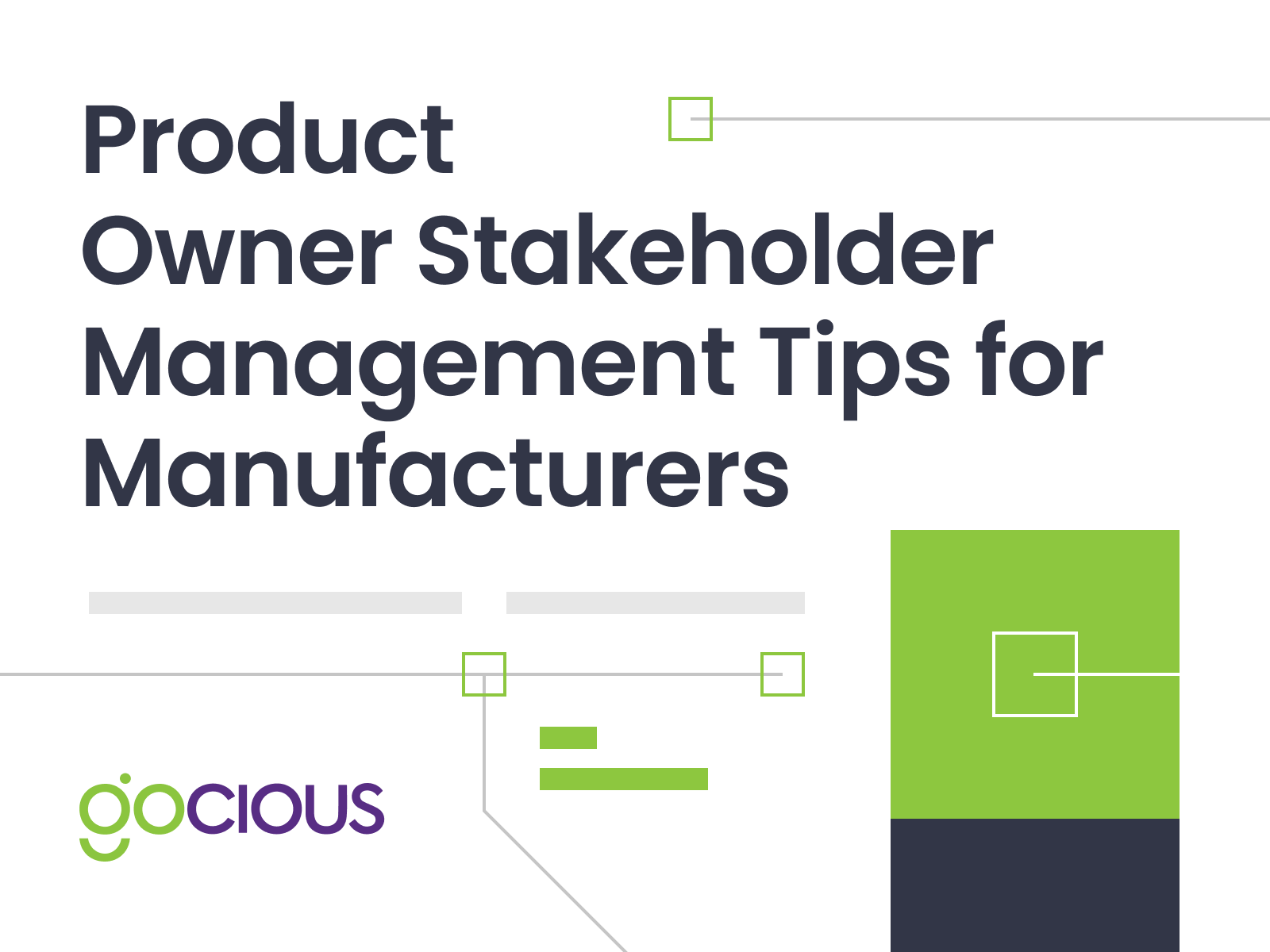
Subscribe to our blog
Ready to improve your roadmapping process?
Curious about how Gocious can help your manufacturing team transform its Product Lifecycle Management strategy? Let’s schedule a call to explore!
Product Management Articles
Product Vulnerability Management: How to Assess Risk & Ultimate Checklist
Product vulnerability management has become a core leadership responsibility for manufacturers. As connected products combine hardware, embedded software, networks, and cloud services, even a single security vulnerability can pose significant risk to product performance, safety, and customer trust. Vulnerabilities can trigger recalls, exploited vulnerabilities in the field, breach events, and costly patch campaigns that disrupt roadmaps and consume resources.
Product Iteration in Manufacturing and How to Test Features
Product iteration plays a central role in modern manufacturing because it bridges strategic intent with measurable improvements. When hardware, firmware, and software intersect, organizations need an iterative process that reduces risk while supporting continuous improvement. A disciplined approach helps cross-functional teams introduce new features that align with user needs, respond to market demands, and strengthen financial performance.
Cross-Functional Teams in Manufacturing 101: A Product Leader's Guide
Cross-functional teams help manufacturing organizations align market needs, engineering realities, and factory operations within a single working model. Instead of passing requirements from product management to engineering, then to operations, and finally to the plant, cross-functional groups bring the right people together from the early concept stage to production, ramp, and long-term support.
Marketing Requirement Documents for Faster Product Launches
A marketing requirement document is often the first serious test of whether a manufacturing product concept deserves investment. In many organizations, this test is rushed or scattered across slide decks, emails, and spreadsheets. The result is product teams guessing which features matter, sales promising capabilities that do not exist, and capital locked in products that miss the target market.
Product Silos in Manufacturing: How to Break Them
Product silos continue to be one of the most costly and hard-to-spot issues inside modern manufacturing companies. As product lines expand across regions, variants, and software configurations, decisions often become fragmented across different teams. Each group optimizes within its own world, but no one sees the full picture. When this happens, organizations face missed revenue, higher costs, and slower reactions when customers or market conditions change.
How to Define Product Goals for New Manufacturing Launches
Product goals shape whether a new launch strengthens a manufacturing portfolio or slowly drains capital, time, and capacity. In global manufacturing environments, every new product locks the organization into tooling decisions, supplier relationships, and long-term software support. Unless those commitments align with clear product goals and a focused product vision, product teams risk shipping something that technically reaches the market but fails to reach revenue growth, customer satisfaction, or quality expectations.
Sustainable Innovation in Manufacturing for Executives
Manufacturing executives face a pivotal moment. The future of industrial competitiveness depends on the ability to deliver sustainable innovation that reduces greenhouse gas emissions, trims waste, protects margins, and supports long-term resilience. Leaders are feeling pressure from customers, investors, regulators, and supply chain partners who now evaluate not only how efficiently products are made, but also the environmental impacts and social outcomes associated with them. For organizations hoping to stay relevant for future generations, incremental adjustments are no longer enough.
How to Create Profitable Product Configurations
For manufacturing leaders, product configurations are becoming a primary lever for controlling complexity, margin, and lead time across global product portfolios. Customers now expect tailored, market-specific offerings, yet every new variant can add engineering effort, supply-chain risk, and shop-floor disruption. The difference between profitable customization and uncontrolled complexity often comes down to how intentionally you design and manage configurations.
How to Validate a Product Idea in Manufacturing
Validating a product idea is one of the most important responsibilities for manufacturing leaders. The decisions made at this stage shape tooling investments, supply chain commitments, and long-term product viability.
A poorly validated concept can introduce years of complexity, unnecessary cost, and slow progress toward profitable growth. Strong product validation gives leadership reliable evidence before any large purchase orders or production changes occur and helps teams avoid the risks that come from assumptions or intuition.
Why Manufacturing Data Visualization Matters for Product Leaders
Manufacturing data visualization has become essential for product leaders who oversee complex portfolios in the manufacturing industry. Many organizations still view visualization as a set of disconnected charts or standalone dashboards, which results in slow decisions, misaligned priorities, and production lines that optimize locally without improving the portfolio as a whole.
Product Owner Stakeholder Management Tips for Manufacturers
Product owner stakeholder management is becoming a make-or-break discipline for manufacturers running complex portfolios of smart, connected products. When stakeholder expectations are unclear or misaligned, capital is locked into the wrong variants, plants absorb avoidable disruption, and digital initiatives stall before they ever hit the shop floor.
Agile Product Development: Your Guide to a Successful Roadmap Process
Agile product development is the operating system that high-performing product teams use to convert product plans into on-time product launches. When product lines span complex portfolios across hardware and software, static annual plans cannot keep pace with shifts in demand volatility and regulatory change. Executives need an agile product development process that uses adaptive roadmaps to accelerate time-to-market, lower risk, and make investment trade-offs explicit at the portfolio level.













